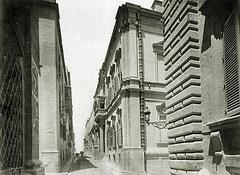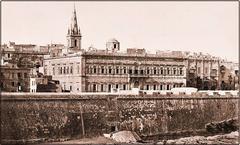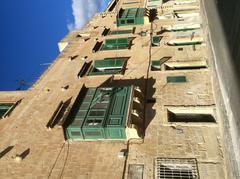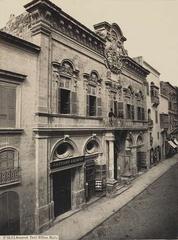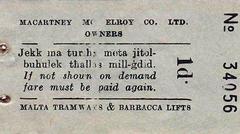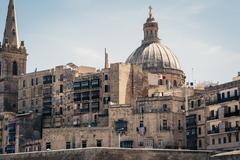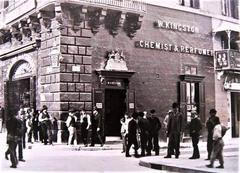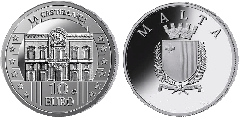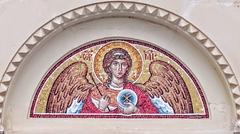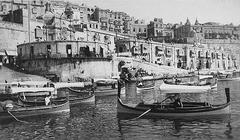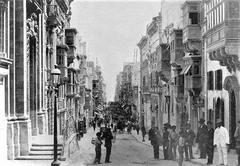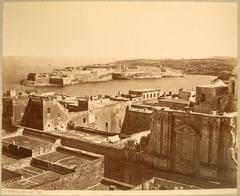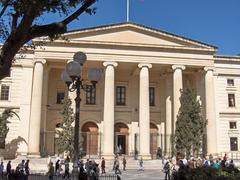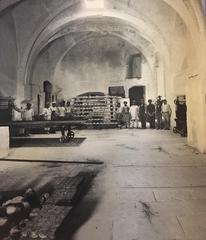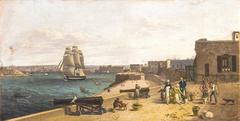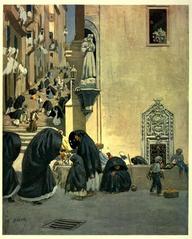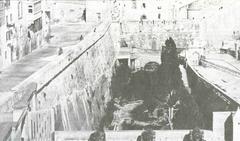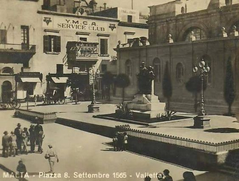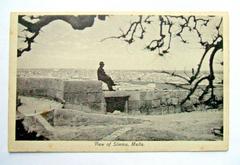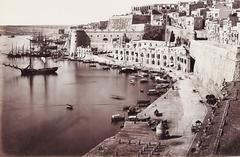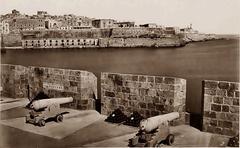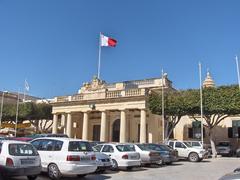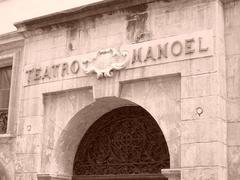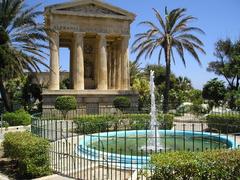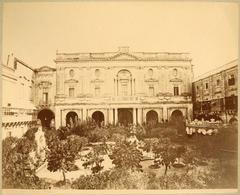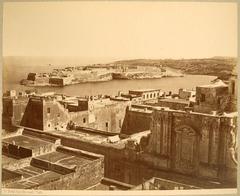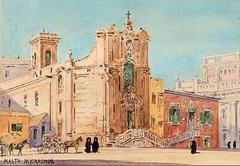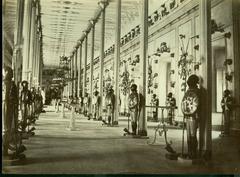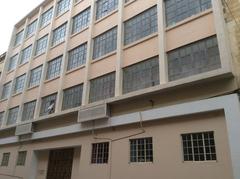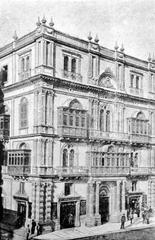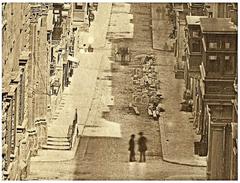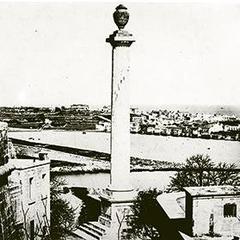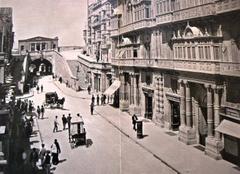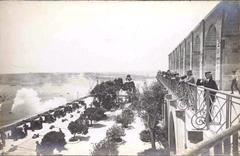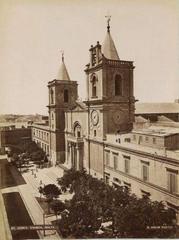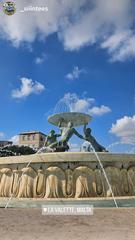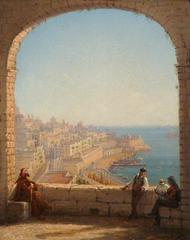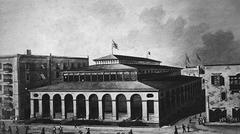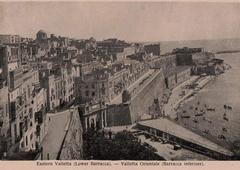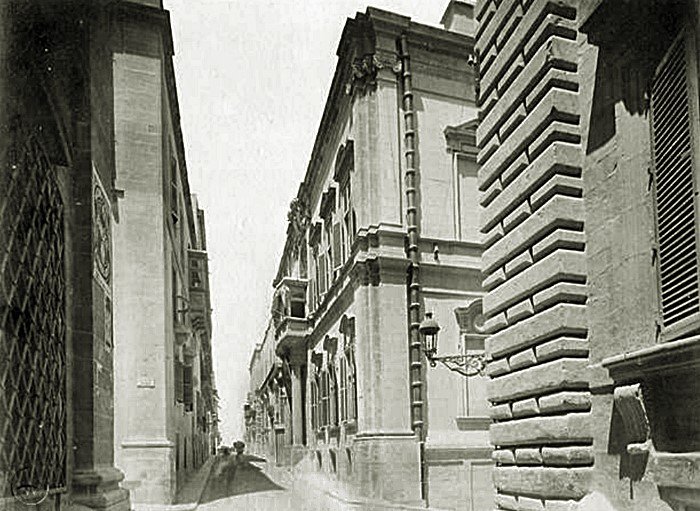
Admiralty House Valletta Visiting Hours, Tickets, and Historical Sites Guide
Date: 15/06/2025
Introduction
Admiralty House in Valletta, Malta, is a cornerstone of the city’s UNESCO World Heritage landscape and a compelling symbol of the island’s layered history. Originally a palatial residence for a knight of the Order of St. John, it later played a crucial role as the British Royal Navy’s Mediterranean headquarters before becoming a national museum and, more recently, government offices. Although currently closed for regular public visits due to restoration and its conversion into the Attorney General’s Office, Admiralty House’s architectural and historical significance continues to captivate visitors and researchers alike. This guide consolidates up-to-date facts on its origins, architectural evolution, practical visiting information, and tips for exploring Valletta’s nearby historical sites, ensuring a comprehensive resource for cultural travelers and history enthusiasts.
Table of Contents
- Introduction
- Origins and Early Development
- Baroque Transformation and Architectural Significance
- British Colonial Era and Naval Importance
- Transition to Maltese Government and Cultural Role
- Recent Developments and Current Use
- Practical Visitor Information
- Frequently Asked Questions (FAQ)
- Visuals and Interactive Media
- Contact Information
- Summary and Final Tips
- References
Origins and Early Development
Admiralty House, known locally as Dar l-Ammiraljat, traces its origins to 1569, just after the Great Siege of Malta. It was initially constructed as two private residences by Fra Jean de Soubiran dit Arafat, a knight of the Order of St. John, reflecting the ambitions of the Order to establish Valletta as a fortified city of European prestige (attorneygeneral.mt). Over time, ownership passed to other knights and eventually to the Treasury of the Order, firmly embedding the building within Valletta’s social elite and administrative fabric.
Baroque Transformation and Architectural Significance
Evolution into a Grand Palazzo
In the 1760s, Fra Raimondo de Sousa y Silva, a wealthy Portuguese knight, unified the two residences into a single palatial structure, attributed to architect Andrea Belli, famed for the Auberge de Castille. Completed in 1763, the building—then called Palazzo Don Raimondo—became a hallmark of Baroque architecture (attorneygeneral.mt).
Key Architectural Features
- Façade: The grand, symmetrical façade is constructed from Maltese limestone, with tall, rectangular windows and a central doorway crowned by a ceremonial balcony (planetware.com).
- Staircase: The monumental, free-standing marble staircase is considered one of Malta’s finest, possibly inspired by the Auberge de Castille.
- Layout: A central courtyard, two above-ground floors, and a basement create an airy, stately interior. The main halls, high ceilings, and refined decorative elements reflect the prestige of its original occupants (e-a-a.com).
British Colonial Era and Naval Importance
With the advent of British rule, Admiralty House was leased to the Royal Navy in 1821, becoming the official residence of the Commander-in-Chief of the Mediterranean Fleet (attorneygeneral.mt). The building’s prominence grew, hosting historic figures like Lord Mountbatten, Winston Churchill, King George V, and Queen Elizabeth. Its location near Valletta’s Grand Harbour made it central to British maritime strategy during both world wars (commsmuseum.co.uk).
Transition to Maltese Government and Cultural Role
After Malta’s independence, Admiralty House was transferred to the Maltese Government in 1961. In 1974, it was repurposed as the National Museum of Fine Arts, housing important collections of Maltese and European art (attorneygeneral.mt). The museum cemented the building’s cultural status until its relocation in 2018 to the Auberge d’Italie, now known as MUŻA (muza.mt).
Recent Developments and Current Use
Today, Admiralty House is undergoing restoration and has been adapted for use as the Attorney General’s Office. The building is a Grade 1 monument on Malta’s National Inventory of Cultural Property (attorneygeneral.mt). The ongoing €4.4 million restoration aims to preserve its historic features—such as the façade, ceiling paintings, and iconic staircase—while upgrading infrastructure for contemporary office use (timesofmalta.com).
Practical Visitor Information
Visiting Hours and Tickets
As of June 2025, Admiralty House is not open for routine public visits. There are no current ticketing options or regular guided tours due to restoration and its government function (heritagemalta.mt). When access is available (typically during special events), information is announced via Heritage Malta and other official platforms.
Accessibility
- The building’s historic layout, including stairs and uneven surfaces, may limit accessibility for visitors with mobility impairments. Restoration works aim to improve infrastructure, but access remains restricted (Wikipedia).
- Valletta itself is a highly walkable city, but visitors should be prepared for cobbled streets and some steep gradients.
Visitor Facilities and Etiquette
- Facilities: When open, facilities such as restrooms and cloakrooms may be limited due to its primary use as government offices.
- Dress Code: Modest attire and comfortable footwear are recommended. High heels are discouraged on stone floors (Voyage Tips).
- Photography: Non-flash photography is usually permitted in public areas, but always observe posted restrictions.
Nearby Attractions
Admiralty House is centrally located, making it an excellent reference point for exploring Valletta’s highlights (Malta Uncovered; Trek Zone). Key nearby sites include:
- St. John’s Co-Cathedral: Famed for its ornate Baroque interior and Caravaggio masterpieces.
- Grand Master’s Palace: Former seat of the Order of St. John and now the Office of the President.
- Upper Barrakka Gardens: Offers panoramic harbour views.
- MUŻA (National Museum of Art): Houses collections formerly exhibited at Admiralty House.
- National Museum of Archaeology and Fortifications Interpretation Centre are also within walking distance.
Special Events and Temporary Access
While regular access is suspended, Admiralty House occasionally opens for heritage days or cultural festivals, often featuring guided tours or exhibitions. Announcements are made through Heritage Malta or the Attorney General’s Office (GuideMeMalta).
Travel Tips
- Arriving: Valletta is served by a central bus terminus, with easy walking routes to all main attractions.
- Parking: Limited and metered; public transport or walking is preferable.
- Weather: Visit early or late in the day during summer to avoid heat (Malta Info Guide).
Frequently Asked Questions (FAQ)
Q: What are the current visiting hours for Admiralty House?
A: Admiralty House is closed to the public due to restoration. No regular visiting hours are available.
Q: Are tickets required to visit?
A: No tickets are currently available as public access is suspended.
Q: Can I visit during special events?
A: Yes, occasionally during events like European Heritage Days. Check Heritage Malta for updates.
Q: Is the building wheelchair accessible?
A: Accessibility is limited due to historic features. Confirm details with Heritage Malta if special access is announced.
Q: Are guided tours offered?
A: Only during special events or by arrangement. Private walking tours often include exterior commentary.
Q: Where can I see art collections formerly at Admiralty House?
A: Visit MUŻA, the National Museum of Art.
Visuals and Interactive Media
- Virtual Tours & Images: Heritage Malta and tourism platforms provide high-resolution images and virtual tours of Admiralty House.
- Alt Text Examples: “Admiralty House Valletta façade,” “Historic marble staircase at Admiralty House,” “Restoration works at Admiralty House Malta”.
Contact Information
- Heritage Malta: heritagemalta.mt | Tel: (+356) 22 954 300 | Email: [email protected]
- Attorney General’s Office: attorneygeneral.gov.mt
Summary and Final Tips
Admiralty House epitomizes Malta’s resilience and adaptability—from the Order of St. John, through British naval dominance, to its current civic role. Though public access is suspended during restoration, the building’s imposing Baroque façade and rich history remain central to Valletta’s narrative (attorneygeneral.mt; heritagemalta.mt).
To experience Malta’s vibrant heritage, plan your itinerary to include accessible sites like MUŻA, Auberge de Castille, and St. John’s Co-Cathedral. For updates on reopening, special events, or heritage tours, consult official sites and consider using cultural apps such as Audiala for real-time information and curated tours.
References and Useful Links
- Admiralty House Premises, Attorney General’s Office Malta (attorneygeneral.mt)
- Valletta’s Admiralty House to be renovated and turned into AG’s offices, Times of Malta (timesofmalta.com)
- Architectural Highlights, European Architecture Association (e-a-a.com)
- Malta History and Naval Importance, Communications Museum (commsmuseum.co.uk)
- Valletta Tourist Attractions, PlanetWare (planetware.com)
- MUŻA History, Malta’s National Art Museum (muza.mt)
- Valletta History and Points of Interest, Malta Uncovered (maltauncovered.com)
- Heritage Malta Opening Hours and Visitor Information (heritagemalta.mt)
- Trek Zone (trek.zone)
- GuideMeMalta (guidememalta.com)
- Wikipedia (wikipedia.org)
- Voyage Tips (voyagetips.com)
- Malta Info Guide (maltainfoguide.com)
